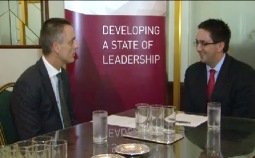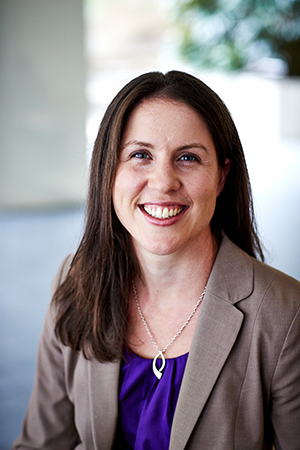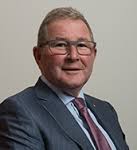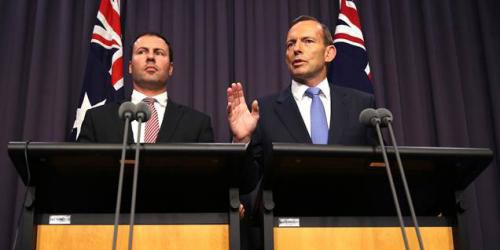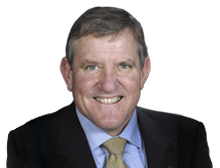Branding and design can sometimes seem to draw more from necromancy than neuroscience. To Jack Perlinski, who has been both researching and professionally advising on branding and design for more than 27 years, it comes naturally – with a bit of help from both necromancy and neuroscience. The true value of branding – both personal and in business – he warns, is largely still misunderstood and often greatly overlooked. He is on a mission to change that, through his business DAIS and his personal branding satellite, BrandMe. Jack Perlinski is doing so, cleverly, by showing business leaders how their bottom line and balance sheet growth is empowered by their branding.
By Mike Sullivan >>
JACK PERLINSKI knows how to shock business leaders into thinking in brand new ways. He does so by demonstrating how the business brands they are building – and their personal brand that they may be overlooking – directly impact their fiscal and physical performance.
He shocks them with the prospect that brands can – and do – go either way. Brands live. He asks uncomfortable questions, like, is your brand working for or against you? And, are you working for or against your brand?
And he asks possibly the most uncomfortable question of all: What is your brand and what does it stand for? What do you stand for? 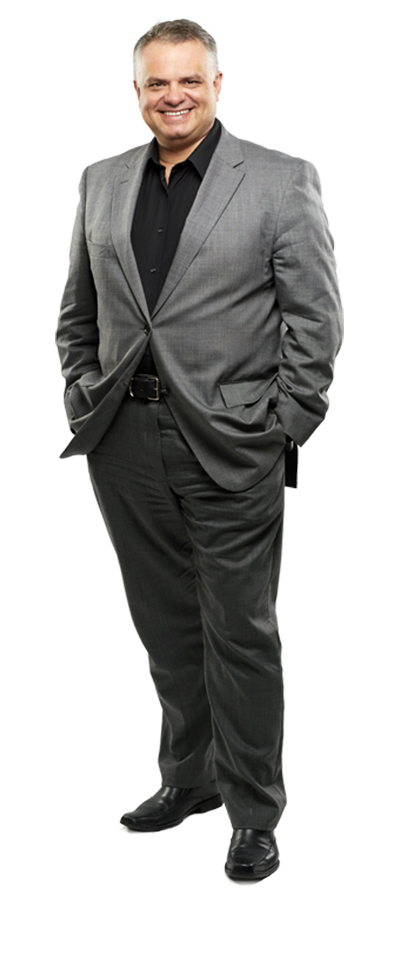
Branding – once-upon-a-time tucked away comfortably under the protection of marketing departments and refreshed with a new and well-explained design occasionally – is compromised unless it is top-of-mind for everyone in an organisation today, Mr Perlinski believes.
His experience not only bears this out – the brand strategy and design company he founded in 1989, DAIS, not only has the case studies to prove it (and DAIS actually insists its clients record the financial gains from their brand development) – Mr Perlinski can demonstrate the science behind successful organisations being empowered by great strategic branding.
He insists that the first major hurdle to achieving such results is to help business leaders understand what brand strategy really is – and what power it delivers to organisations that understand and cultivate a unique brand promise. He also helps business leaders to understand the emotion behind building great brands.
An initial client conversation with DAIS can be broken into four parts –social, informative, exploratory and education – and it can be challenging.
“Brands present themselves to us and express a passion that meets our desire,” Mr Perlinski said. “When Virgin came into the Australian marketplace, it did not create the desire for cheap air travel, or cost-effective air travel. It existed.
“All they did was found an economic and a marketing strategy and a voice to express a passion, as Virgin Blue, to actually meet that desire. So their brand promise, when they came in, their positioning concept, was: To Keep the Air Fair.
“Compass didn’t do it, Ansett didn’t do it, and Qantas definitely wasn’t doing it. Everyone went, ‘Wow, they are giving us what we want’.”
Mr Perlinski said ‘desire’ is a valuable and important part of branding. To understand this, he related the process to a combination of ‘left and right brain’ thinking.
“Every now and then you get this amazing surprise when you meet someone who has a balanced blend of both: ‘I am a left brain thinker and a right brain thinker and I can do amazing things. I can switch between them.’
“In branding it is the same. Without stimulants (he laughed). But perhaps with motivation.
“So, there is desire. And we all understand brand as desire.
“The problem is most people see a brand as the things they emotionally respond to and like,” he said. “So when you start branding an organisation and when you are building a brand for an organisation, people look at this first hemisphere and they go, okay, let’s define who we are. We will design a logo and we will apply and align that definition to all our tools in the way we look.
“We’ve just built a brand. Congratulations,” he grinned.
“The problem is that it is an imbalanced strategy and it is only decorative. It is the realm of the decorator, not the strategist.
“Because it is all about I like this colour, I don’t like that colour. It’s emotive. But, it’s an important part of the chemistry.”
RESEARCH & COMMITMENT
The starting point for any brand strategy development has to be research, according to Jack Perlinski. He is still astonished by how little research most companies do before embarking on a new brand strategy or re-branding.
“In my experience, I think 90 percent don’t do it,” he lamented. “They are completely intoxicated with the ideal of what branding is and they see it as a visual experience. They see it as decorative. They see it as something that makes them simply ‘like’ it.
“The other hemisphere, which is critical – and after 27 years of building many, many, many brands corporate, product, start-up, established, national, international, one-man bands to multi-million dollar organisations – I know that what builds brands is commitment.
“So, on one side you have desire, on the other side you have commitment. This is where you actually have to engage in implementation. Implementing the strategy and the definition into a behaviour.”
BRAND ELEVATION
The enlightening thing most business leaders discover with Mr Perlinski and DAIS staff is that even though what is necessarily discussed can be esoteric and emotional, the process for implementing brand strategy is clear, somewhat formulaic and accessible. DAIS provides a strategic roadmap to elevate brands.
“What they don’t understand is what you need to do to make it happen, to make it realise, and that there is actually a mechanism, a pathway, a formula that guarantees you can do it,” Mr Perlinski said. “Once they realise what that is, and we can fill the blanks, the gap spots for them, with the things that are meaningful to their brand – it is their brand, not ours – then they step up into a completely different paradigm.
“We, on a daily basis, have people leave here and go, ‘I am thinking about this in a completely different way’.”
Mr Perlinski said by the time business leaders have gone through that process of discovery, they are starting to understand the potential for elevating their brand.
“Our brand promise is elevating brands,” Mr Perlinski said. “I will elevate the brands of others. I will take them from where they are today and give them the spirit, the knowledge, the information structure they need to elevate. And I am talking about growth on a P&L.”
He does insist on full commitment from an organisation to achieve this. There is work to do and it requires sound commitment, he said.
“In this implementation sector of commitment, if you follow proven processes that are confirmed to create a difference in conversion, in referral, in relationships, and you can bottle those and capture them, aligning them to your desired strategy, and you as a team zealously commit to implementing those processes and those tools, to that rhythm for 12 months – like it is a religion – then your business should expect a greater than 25 percent growth,” Mr Perlinksi said firmly.
But there is also a sting in the tail.
“Here’s the challenge: you have to pick the KPI (key performance indicator),” he said.
“You have to tell me where it is you want to grow. Is it existing clients? Is it new markets? Virgin market growth? Or, getting old clients, that once were, back? That’s what I’m talking about.
“Once you understand where your growth strategy is, you create behavioural systems in the first instance that create a commitment to delivering and succeeding that is tethered and linked to who you are being. That is the desire part.”
It is multi-faceted and challenging, for everyone, including DAIS, Mr Perlinski said.
“You have a masthead, you have a logo, you have a brand promise, it’s on your business card … well how do you tie that feeling into your website, into your social media strategy? How do you use Linkedin, how do you use Facebook?
“There are a whole lot of ways that, once you unlock this, it allows you to create a whole lot of tools that empower your behaviour. Every process here actually delivers a need to use a tool.
“So, how (do you ensure) you are only making and investing in the things you tactically need? You are not spending money on stuff that you don’t even know whether it creates a return.
“The desire phase is all about defining the brand and creating the tools. The commitment phase is about implementing and sustaining the brand. How do I actually measure this investment is working for me? … Because I have a clear KPI to meet. 
“And, more importantly, create a culture of innovation. How well did we do? How could we do more? What could we do more?”
SMARTIE CULTURE
Nobody leaves the DAIS office or a meeting with DAIS staff without a box of Smarties. It is a symbolic gesture that leaves a sweet taste in everyone’s mouth. DAIS may be Smarties’ best customer – but Smarties help DAIS to find their best customers.
“We have a Smartie culture,” Mr Perlinski said. “No-one ever leaves DAIS without a box of Smarties. I give out, sometimes, 3500 boxes of Smarties a quarter. In an intense period.
“You know what it is? It’s about hospitality. I want people to feel welcome at DAIS. I don’t want you to leave here with less than you arrived. Everyone here is geared that way. That is the ‘inspire me’ mentality.
“How can we say thank you for coming to DAIS? We have a little box of Smarties and we say here’s your Smartie road pack and thank you. If you came to my home, I’d do exactly the same thing. That’s our way.”
Like everything DAIS does, Jack Perlinski measures the value of that Smartie culture.
“I also know the impact that my Smartie culture and behavioural system has on my conversion ratio. I know that if we follow that process we get a better result. We get a consistent result,” he said.
“We stop that behaviour or we erode that behaviour, or sometimes we change that behaviour a little bit, it affects that number. It is part of our cultural behaviour. It’s who we are.
“But I can always innovate with that.”
An example was Christmas several years ago when the DAIS team made a Christmas tree out of 10,000 Smarties – and recorded it and broadcast it.
“That was our multimedia piece,” Mr Perlinski said. “A couple of years after that we did Smartie faces, a mosaic in a studio. And we filmed it. It is a cultural bond, internally, but it also engages our clients.”
And it is a daily demonstration that DAIS practises what it preaches when it comes to its brand culture. ‘Inspire me’ is a sensory experience.
DAIS demonstrates, daily, that building a brand is about commitment.
“It is actually about commitment,” Mr Perlinski said. “How you apply that in a tactical behavioural cultural connection sense, and how you commit to sustaining, measuring and innovating it. It is also why my business is called DAIS. That process is how you build a brand.”
“When I show people physically how that actually looks and operates, what I am showing them is a GPS – a growth performance system for their brand, for their business.”
Brand stewardship starts at board level. It is passed on through staff.
“Inducting people into brand is not about job descriptions and duty statements. That is the technical aspect of a brand,” Mr Perlinski said.
“When you induct someone into a brand, you induct them into your story and you share every aspect of what’s here, why it’s here, how it connects to who we are and you weave it together.
“It starts with what the expectation is. Joining my team is optional, but sharing our passion is not.
“You step into this world … this is what we’re about. We can articulate it. I can show you how, at every touch point … my grandfather and his work. There is a frame of his tools from his craft (Jack Perlinski’s grandfather was a humble shoe smith in his native Poland). That is a cornerstone to why I do what I do and what I am trying to build here,” Mr Perlinski said.
“I want everybody that I work with to be able to share that with others. So I have got to share it with them. That’s what an induction is: the processes and the behaviours of your business that make you unique. That make you special, that build retention of your brand and how you create a culture.
“At which point I go: and here are all the legal documents and agreement that you need to sign to join us. Code of ethics, credo, confidentiality agreements … would you like to come to DAIS?
“Your brand is on show when you least know it is. If you live it, if you believe it, if you are passionate about it, and it is actually commuting to every touch of why you do what you do, you have nothing to fear. It becomes magnetic,” Mr Perlinski said.
“It is very much a science for us.”
BRAND SCIENCE
Jack Perlinski’s academic background is in the area of design. As his career progressed, Mr Perlinski began to realise that successful branding was a more scientific art than he at first appreciated.
There were artistic, business, and even social consequences for getting that design to properly articulate a brand’s intentions and promise.
“My interest is all around taking responsibility for design. I design things with responsibility,” he said. “It is not just about making something look pretty. It is about … how is this going to create the desired outcome through strategy? That’s why I’m a brand strategist. Not a graphic designer.”
As Mr Perlinski built his own company DAIS – with the implications about elevating brands and providing a strategic platform for brand growth that the name implies – he began to seek out the organisations that respected, as he did, their brands as a true P&L asset.
The DAIS approach to introducing a new client organisation to what is possible for their brand is educative – and experiential.
Mr Perlinski said there were two stages: desire, followed by commitment.
“In the desire part of it, there’s often a lot of resistance, because you get a group of people and they come to the table and we show them a solution – a strategy – and they simply go … ‘but it’s so far out of my comfort zone’ …” Mr Perlinski said. That is when the arguments are backed up by the science and the research.
“The body of work we present is extremely detailed,” he said, indicating a typical presentation may be about as thick as a textbook.
“That ream of paper represents a presentation to a client for a brand strategy. Every one of those pieces of paper in that ream is actually a component of that strategy. So there is no question about the volume of thinking that occurs.
“But at the end of the day, after it is all delivered, we normally get this reaction … “ohhhhh … I didn’t expect that … that’s really different. Can’t we just make it, you know … easy? And simple?” he grinned.
“The truth is that then, the way we counter that kind of fear and resistance … my job, our job, is to take people beyond their comfort – responsibly. Not radically – responsibly.”
Most clients soon came to the realisation that the DAIS team had more than done its homework – and they had both protected the existing brand equity while also offering an evolution. Occasionally, DAIS teams have presented unexpected business possibilities as part of that brand evolution.
“Everything we present, though, and everything that is resolved, is underpinned by governance, financial and HR (human resources) strategy that is ratified and ready to go to market in a proven form,” Mr Perlinski said.
INTERNATIONAL LEADERS
A good example of how DAIS often presents business growth possibilities that organisations may not yet have considered was the case of re-branding Queensland Leaders, the renowned business mentoring organisation founded in Brisbane in 2006. The brand positioning became A State of Leadership, stylish state logos were created, but DAIS surprised the organisation’s founder, James Paulsen, by engineering more under the hood. 
In exploring the possibilities for the brand and the organisation – which had successfully guided and encouraged many of Queensland’s most innovative companies to go national and international – DAIS realised the organisation had to pave a brand space for its own national and international prospects.
“We could see that brand. That is where responsibility again comes into it. We could see that brand far beyond brief, because we knew it was the responsible thing to do.”
Mr Perlinski said that even an organisation as progressive as Queensland Leaders had been taken aback by the DAIS suggestion that it would soon have national and international prospects. The re-branding and re-design seemed to almost immediately create opportunities for that growth and the organisation expanded rapidly
to Victoria and New South Wales, through licensing, followed last year by New Zealand.
Now there are discussions in several Asian capitals for International Leaders licensees and South Australia and Western Australia Leaders groups also start this year.
Mr Perlinski grinned that it was a great example of how DAIS can research a sector and help pave the way for unanticipated business growth. DAIS does all the governance on setting up those brands to operate in new markets, national and international.
“We get legal sign-off, we get accounting sign-offs and we get HR structures in play and trademark structures in play,” he said. “So we can put it on the table and it’s bullet proof.”
BRAND YOU
For Jack Perlinski, the link between organisational brand and personal brand is becoming more pronounced. A lot of his work is increasingly built around assisting business leaders and their teams to develop their personal brands as an integral part of how they can drive innovation within their organisations – and their own careers.
In fact, he has just written a book about this phenomenon (see panel story), Discover the Why in You, and developed the personal branding platform BrandMe.
“There is no difference between what I do personally here – my personal brand – and deliver that and manifest that through my corporate brand,” Mr Perlinski said. “The thing that I have that allows me to do that is clarity.”
It is a clarity that flows through to the bottom line.
“It is about how do I turn my brand into a behaviour that creates and gives a result to others? Because if I can do that, others recognise those qualities in that brand.
“That’s the difference. We are not talking about the theory, we are talking about the practice of personal branding, because in that practice comes personal advantage and financial results. Impact, momentum, success.”
Mr Perlinski said the results were showing through as they trained clients in personal branding worldwide. And that required BrandMe to innovate its training online.
“What we do every day is to teach people how to understand that, and how to put it into play. I am an educator first. We teach, we lead, we inspire. They’re my brand ethics.
“For DAIS, and everybody on staff follows this: We create. We are fresh. We will inspire.
“For me, personally, that’s what mobilises me every day.”
www.dais.com.au
DAIS
Mr Perlinski outlined how the acronym, DAIS, is formed by that roadmap, in a recent interview with the Adobe online magazine, CMO.com. He summarised the key words as:
DEFINITION of your brand.
ALIGNMENT of the tools, mechanisms and resources you need to deliver the message from your definition.
(IMPLEMENTATION and) COMMITMENT to building your brand. You need to implement processes of organisational behaviour that are valued, replicable, scalable and teachable to ensure your brand can consistently deliver on its promise.
SUSTAINING your brand, setting up ways to measure effect and to define the right next innovation.
ends
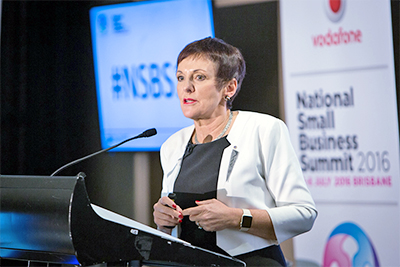
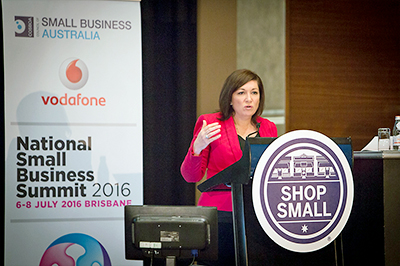

 How to resolve AdBlock issue?
How to resolve AdBlock issue? 



